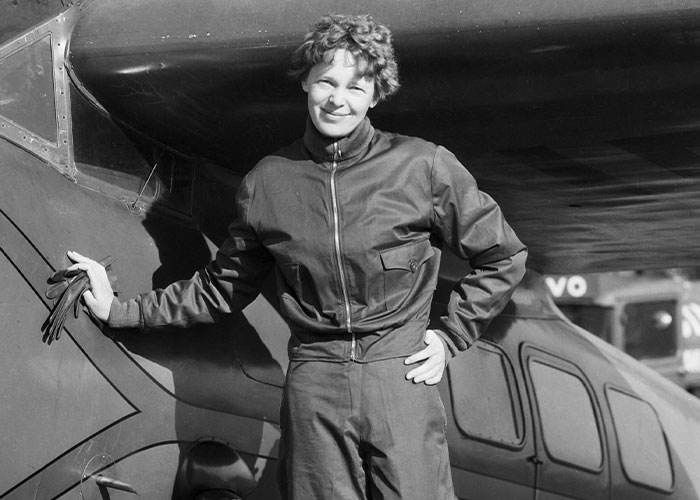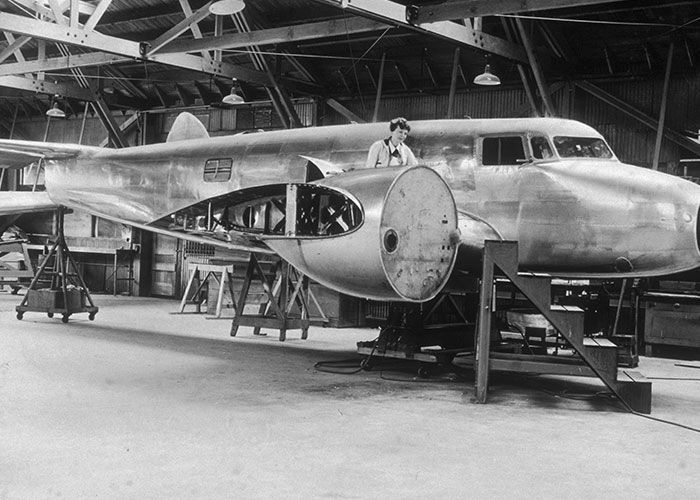One of aviation history’s biggest mysteries might finally be resolved.
When Amelia Earhart was officially declared dead on January 5, 1939, after the US government concluded her engine had run out of fuel and crashed into the vast ocean, questions regarding what had happened following the supposed crash remained unresolved, until now.
For nearly a century, the disappearance of the legendary American aviator has gripped people’s attention worldwide, with multiple theories emerging online trying to piece together her accident.
Deep Sea Vision, an ocean exploration company based in South Carolina, announced on Saturday (January 27) that it captured compelling sonar images of what could be Amelia’s aircraft at the bottom of the Pacific Ocean, National Public Radio (NPR) reported.
Deep Sea Vision, an ocean exploration company, announced that it captured compelling sonar images of what could be Amelia Earhart’s aircraft at the bottom of the Pacific Ocean

Image credits: Bettmann/Getty Images
Taking to its Instagram page, the underwater exploration company wrote: “Deep Sea Vision found what appears to be Earhart’s Lockheed 10-E Electra.”
A high-tech drone and a 16-member crew surveyed more than 5,200 square miles of ocean floor between September and December, ultimately enabling the discovery.
The team reportedly spotted a plane-shaped object between Australia and Hawaii, about 100 miles off Howland Island, which is where the aviation pioneer and her navigator, Fred Noonan, were supposed to refuel but never arrived.
The shape of the object in the sonar images reportedly closely resembled Amelia’s aircraft, a Lockheed Electra, both in size and tail. Deep Sea Vision founder Tony Romeo said he was optimistic about what they found.
He told NPR: “All that combined, you’d be hard-pressed to convince me that this is not an airplane and not Amelia’s plane.”
The Deep Sea Vision team subsequently plans to investigate the area where the images were taken this year.
Tony told The Wall Street Journal: “This is maybe the most exciting thing I’ll ever do in my life.
“I feel like a 10-year-old going on a treasure hunt.
“We always felt that a group of pilots were the ones that are going to solve this and not the mariners.”
The shape of the object in the sonar images reportedly closely resembled Amelia’s aircraft, a Lockheed Electra, both in size and tail

Image credits: New York Times Co./Getty Images
According to Britannica, on June 1, 1937, Amelia and Fred set out from Oakland, California, on their eastbound transcontinental flight on a twin-engine Lockheed Electra plane.
Less than a month later, they reached Lae, New Guinea, having flown 22,000 miles and with 7,000 more to go before they reached Oakland once again.
After departing from Lae, they had to fly another 2,500 miles before they reached their next stop, Howland Island, an incredibly small island in the Pacific Ocean, to refuel.
Unfortunately, overcast skies, radio transmission issues, and low fuel meant that Amelia and Fred did not reach their destination.
Despite extreme efforts to locate the plane, which ended up constituting the most expensive air and sea search in American history up to that point, there was no sign of the aviators’ bodies.
Given the mystery surrounding this event, several theories have emerged that are still being debated to this day, including one theory suggesting that Amelia was a secret agent for the US government and that she was taken prisoner by the Japanese for trying to spy on Japanese-occupied islands, Britannica states.
The more widely believed theory is that the lost duo reached an uninhabited island, Nikumaroro, where artifacts, such as tools and aircraft wreckage, have been discovered. No theory has ultimately been proven true, Britannica explains.
“All that combined, you’d be hard-pressed to convince me that this is not an airplane and not Amelia’s plane,” Deep Sea Vision founder Tony Romeo said
Founder Tony, a pilot and former U.S. Air Force intelligence officer, sold his real estate company’s assets in 2022 to start and fund the ocean exploration business with an $11 million investment and, in large part, join the long line of oceanic detectives hoping to find answers to Amelia’s disappearance, NPR reported.
The pilot’s team had captured the sonar images a month into their expedition but did not realize what they had discovered until the last day of their trip. He told NPR: “It was really a surreal moment.”
The prospect of Amelia’s plane lodged in the ocean floor backs up the popular theory that the aircraft ran out of fuel and sank into the water, as per NPR.
Tony said: “I like everything that everybody’s contributed to the story, I think it’s great.
“It’s added to the legacy of Amelia Earhart. But in the end, I think what’s important is that she was a really good pilot.”
Amelia has left an impressive legacy. According to the National Women’s History Museum, she became the first woman to fly solo across the Atlantic as a pilot in 1932.
Moreover, her awards included the American Distinguished Flying Cross and the Cross of the French Legion of Honor. In 1929, the Kansas native helped found the Ninety-Nines, an organization of female aviators.
As for Fred, who is mostly remembered as “Amelia Earhart’s navigator,” little is known about him. Nevertheless, according to History, Fred was widely credited with opening the Pacific to air transportation, working for Pan American World Airways beginning in the mid-1920s.
Fred was also responsible for charting the westward routes from California to Manila for the carrier’s “Clipper” airplane fleet.
“What a brave lady,” a reader commented






















 English (US) ·
English (US) ·